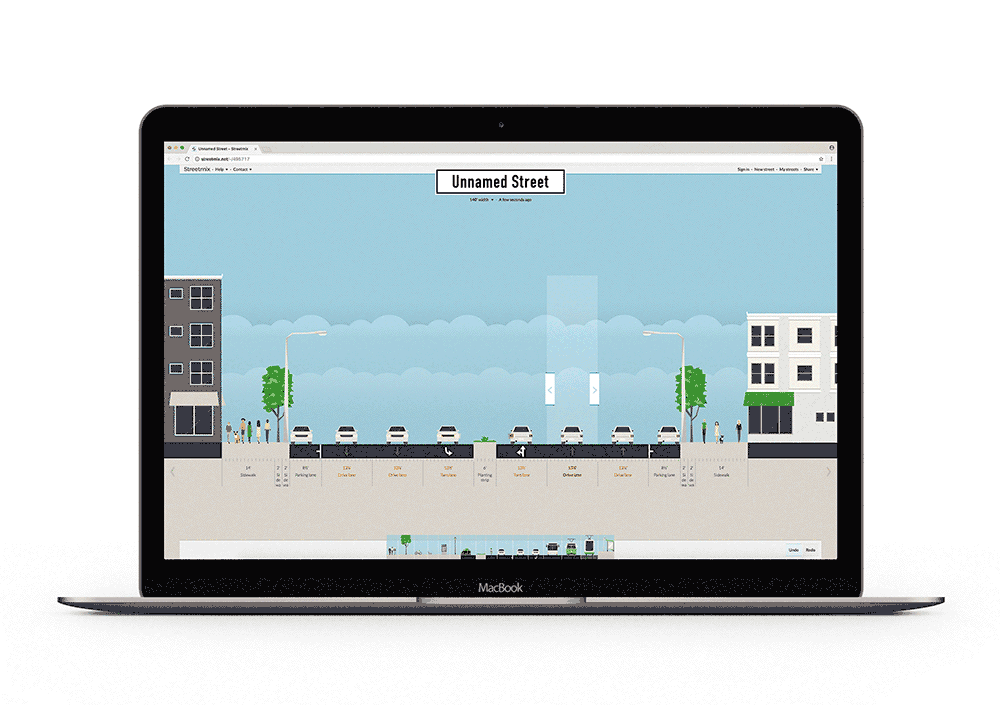

Challenges
Not only is the street design process cumbersome for urban planners, but it also can be alienating and inaccessible to community members who may want to advocate for things like bike lanes, wider sidewalks, and transit stops.
Technical & Time Consuming
City planning has a reputation as a time-consuming process – creating and disseminating ideas requires special software, graphic kits, or technical illustrators. New edits meant a new drawing.

Limited Collaboration
Sharing and gathering feedback on these drawings posed more challenges – real-time edits and suggestions had to be made out of cut paper pieces and puzzled together. This cumbersome collaboration could only occur in person.
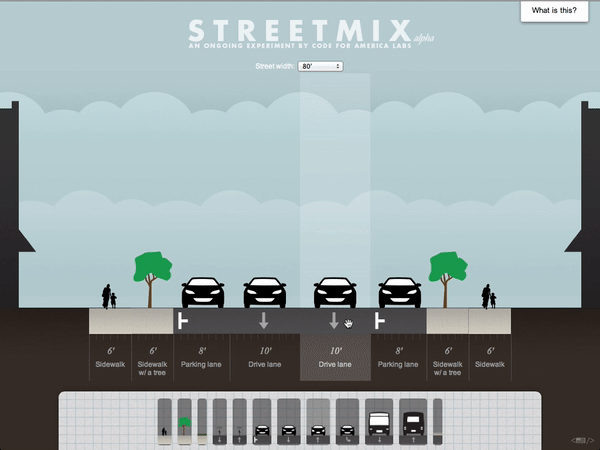
The MVP
At the Code for America one-day hackathon, we built an MVP – a simple drag and drop tool that allows users to add, remove, and reorganize basic segments to a street design.
I worked with the engineers to develop a pixel-to-foot ratio, allowing Streetmix designs to accurately reflect scale. Using technical drawings as a reference, I created basic icons for pedestrians, trees, bikes, cars, and buses.
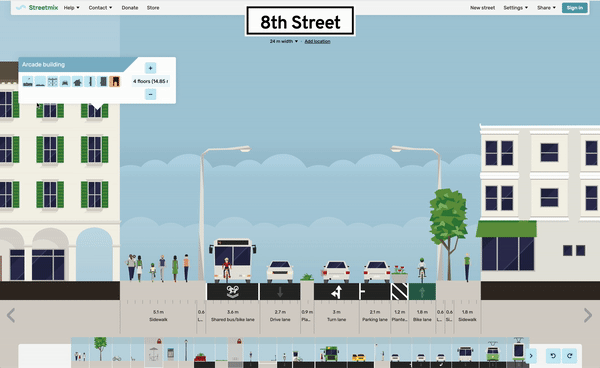
Iterations & Evolution
This MVP provided proof of concept for this tool’s usefulness. Even with limited capabilities and basic graphics, city planners loved it. As a team, we decided to continue to iterate on Streetmix and expand its value to the community.
We identified these group as potential users:
City and urban planners who are looking for a quick way to build out design options
Bike and public transit advocates who would like to share their ideal streets with city decision-makers
Urbanist bloggers who need fast and free custom graphics for their articles
And later, tech companies in the transportation space
New Art Direction, New Users
I immediately knew a thoughtful update to the interface would level up Streetmix as a go-to tool for all things street design. The MVP looked a little austere, so I concepted a unique and vibrant new direction. After creating over a dozen new illustrations, the team and I pushed Streetmix from a utilitarian tool into an app for play. This allowed us to expand our users beyond those who need to build street designs to those who want to (because it’s fun!).
![]()
Illustrateathon
As an open-source project, it was critical to have a helpful style guide to collect contributions while maintaining our brand. To jumpstart the library expansion, I led an illustrate-athon (a hackathon for drawing). The original group of icons felt very “San Francisco.” However, I wanted people across the world to connect with the drawings so they felt empowered to advocate in their own community. After this event, we doubled our icon library, creating a more inclusive Streetmix.
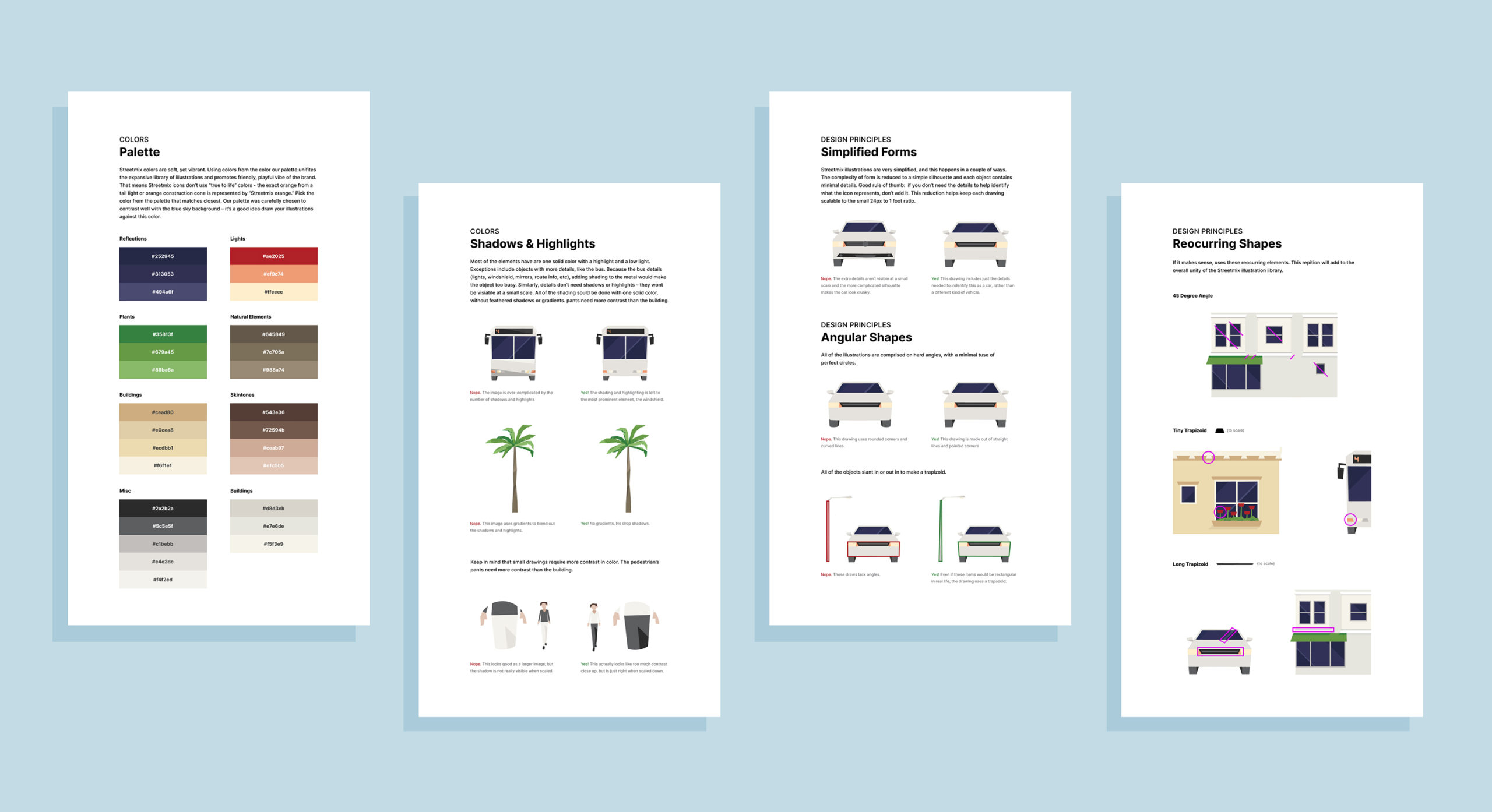
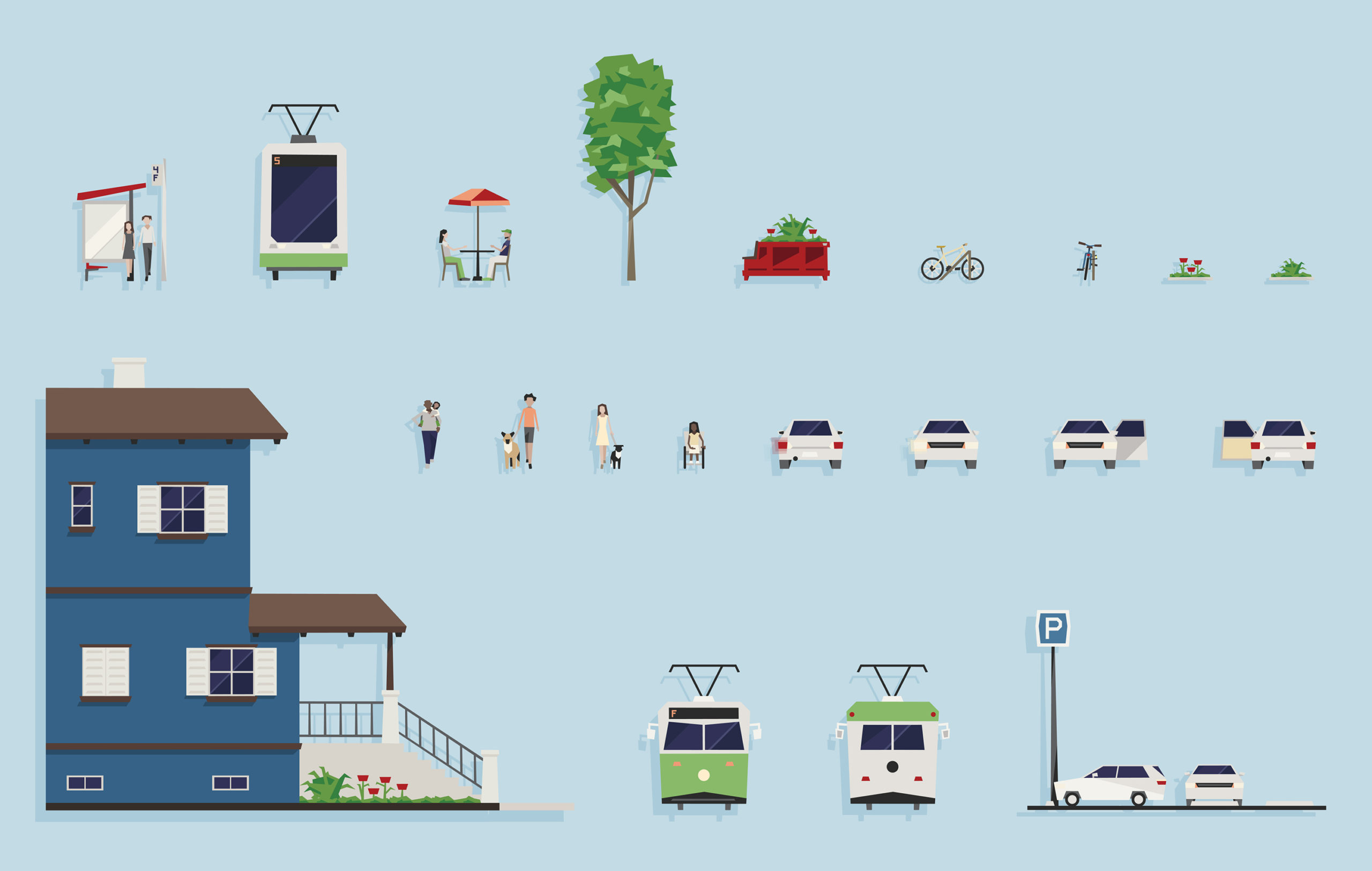
Personal Growth
Not only was I able to take a leadership role with design, but I had the opportunity to learn from talented engineers and UXers to contribute to the vision of the product. I quickly picked up and participated in usability testing with the senior UX researcher, conducting my own interviews with potential users. We channeled our findings and brainstormed ideas into prioritized feature development.
Major Upgrades
Flexibility: Adjust the width of streets, lanes, sidewalks, and etc.
Customization: Choose lane, block, sidewalk, and median styles, as well as pedestrian density
Icon Expansion: Choose from a variety of options for street designs
Friendly Errors: Visualize when a decision doesn’t work and explain why
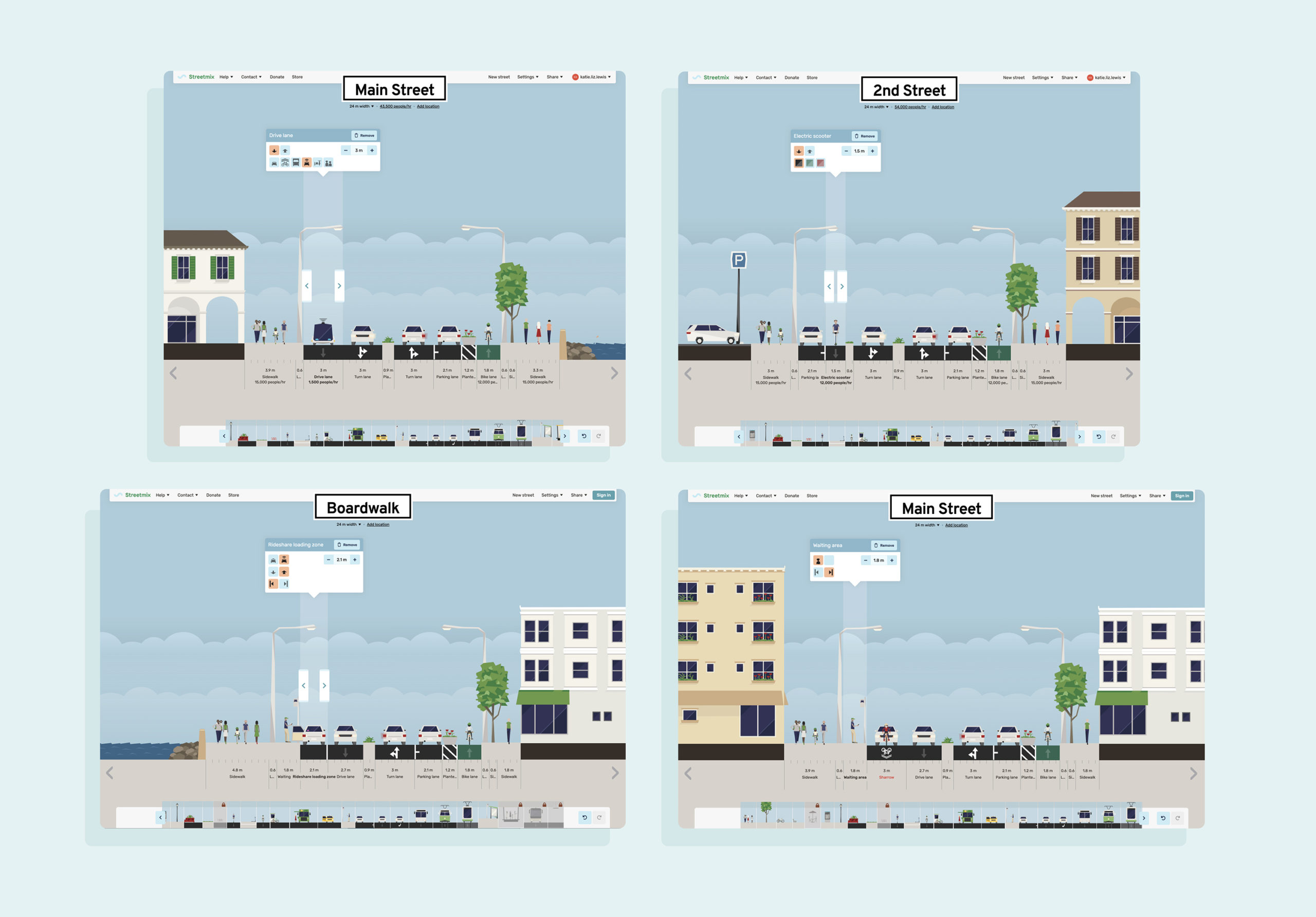
Partnering with Innovators in Tech
The next step for Streetmix: partnerships! Major tech companies in the transportation space use Streetmix. Lyft, NUMO self-driving cars, Skip scooters now all have their own icons to use in street design.
What We Left Out
While we wanted to have a full library of options for users to describe the street accurately, we chose to keep illustrations as icons and not direct representations of a particular street. This level of customization would clutter up the interface and isn’t needed to communicate street design ideas.
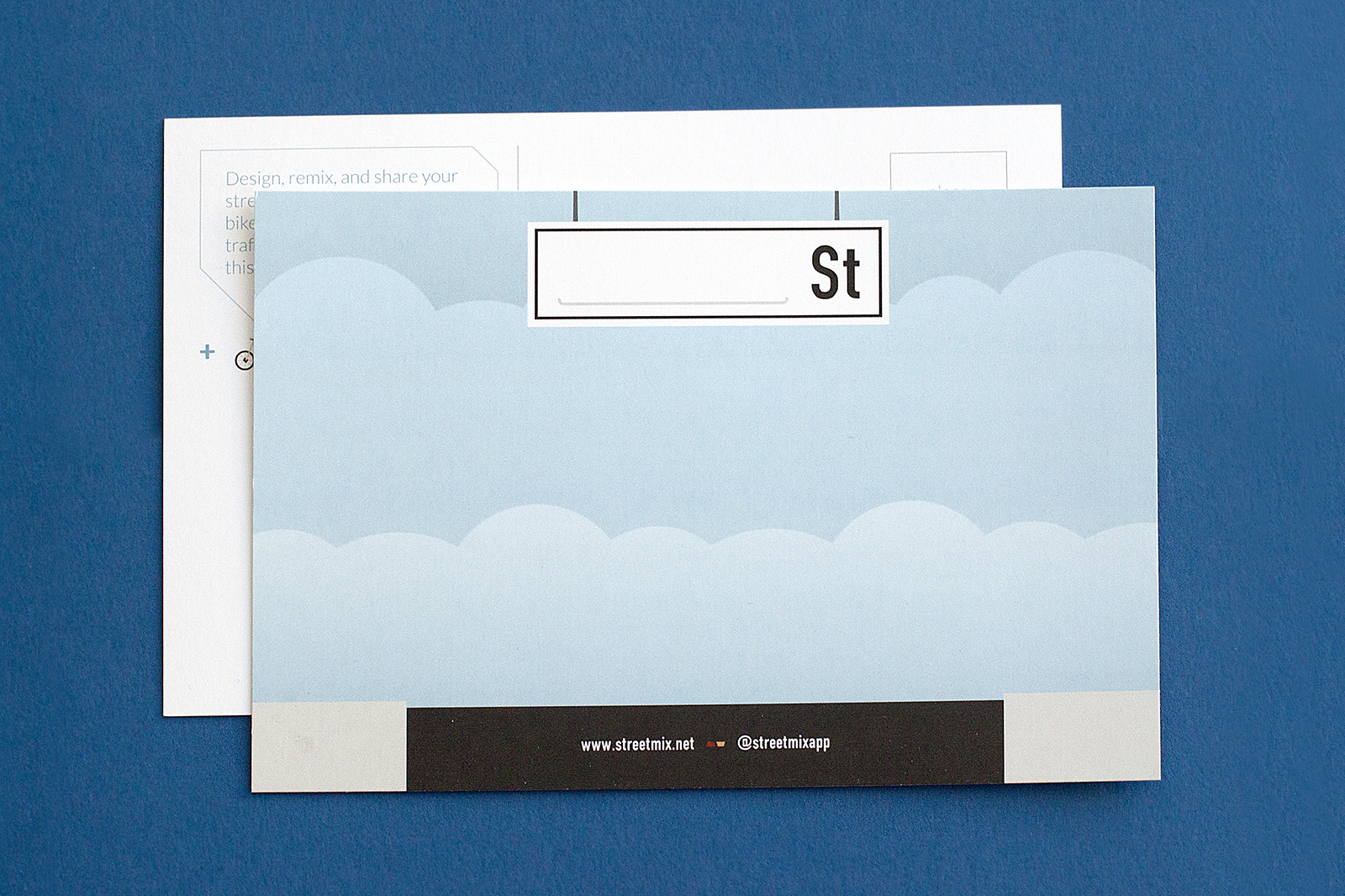
The Swag
We didn’t want to hand out just business cards – we wanted to provide interactive, fun and memorable ways to engage with Streetmix (just like the web version!). Potential users can get a taste of the product by creating a simple street design with the stickers and postcard.

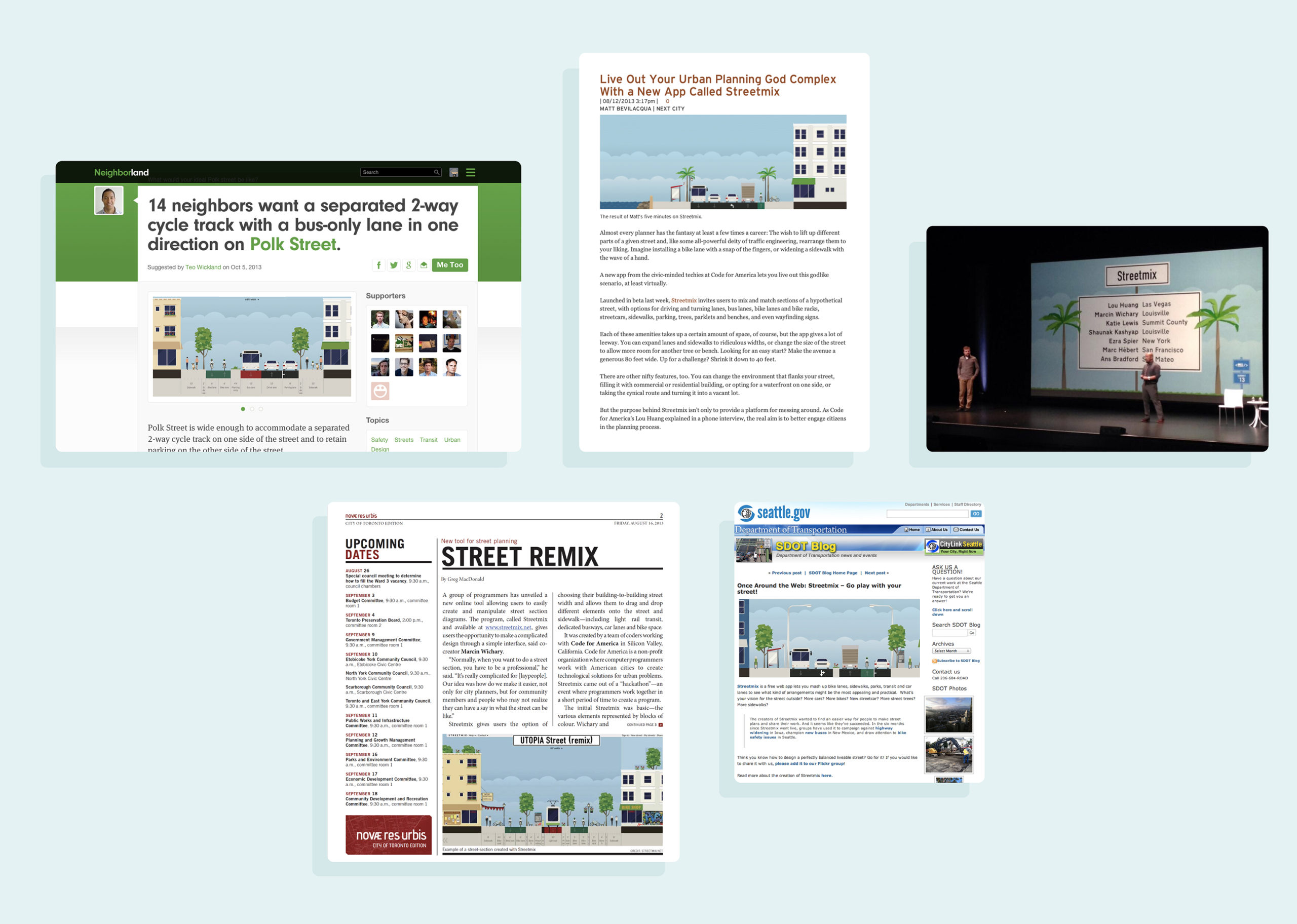
Streetmix In Action
Take Streetmix out for a test drive or check out how community members used Streetmix in Oklahoma City, Seattle, and cities across North Carolina.




